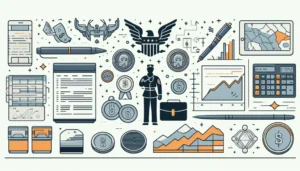This tax season, returns have been uncommonly low, and everyone has noticed. If you tuned into episode 116r of the Choose FI podcast, you know why that’s not necessarily a bad thing.
But for those who didn’t listen, this post will cover why you should try to get your next year’s tax return under $100. I’ll also discuss methods for doing so.
Without further ado, let’s get started!
Why Refunds Were Down This Year
First things first, we need to talk about how tax returns work, which is exactly what Brad and Jonathan do in the episode. There are two key tax terms we need to break down:
- Tax Liability. Your tax liability is the total amount you owe after filing.
- Tax Withholding. Your tax withholding is what you send to the government for taxes throughout the year.
If your tax withholding is larger than your tax liability–meaning you overpay the government–you get a refund for the difference. The refund you get is YOUR money that YOU overpaid. It’s not money the government gives you simply for being a good taxpayer.
Now let’s apply all that to why refunds are down this year. Thanks to the new tax law, your tax liability is the same, but the withholding table has changed.
In other words, refunds are down this year because withholdings are down. That means less money comes out of your paycheck each month, but it also means less money in your refund at the end of the year.
Why That’s A Good Thing
Finally, onto the good part–why it’s good that your refund is smaller.
As any member of the FI community knows, we like to optimize our lives. That means making our money work for us at all times.
So, if you’re aiming to optimize your life, not giving the government too much money means you can put your money to work rather than waiting until the end of the year to get a return and blowing that money on something frivolous.Dan Ariely and Jeff Kreisler, writers of “Dollars and Sense: How We Misthink Money and How to Spend Smarter” put it perfectly:
“Americans want tax refunds because getting money on April 15 feels like a bonus”
This reiterates Brad and Jonathan’s point: The money you get back at the end of the year was money that was being taken out of your paycheck throughout the year. It’s not a bonus like a lot of folks think. It’s the government returning your money.
When you receive a lower refund, that means you’ve kept more of your money throughout the year. And that, in turn, means you have more money available to work for you on your path to FI.
In a minute, I’ll talk about a couple of things you can do with your money so you earn more. But first, let’s discuss how to do it.
How To Get Your Tax Return Under $100 Next Year
In Episode 116r, Brad and Jonathan talk about getting your return under $100, or at least smaller than it may have been in the past. Let’s talk about how to do that.
Figure Out How Much You Need To Pay In Taxes
Here’s a simple four-step process to do that:
- If you know your projected paycheck, plug that income into a tax calculator. That will tell you what you’ll owe in federal taxes at the end of the year.
- Look at your last paycheck and calculate the taxes withheld up to this point. Compare what you know you’re going to owe at the end (the number from the tax calculator) with how much has been withdrawn.
- Determine how many pay periods you have left in the year.
- Divide how much you’ll owe by the number of pay periods you have left and that will give you how much you should be sending the government.
Adjust Your W-4
After you determine how much you should be sending to the IRS, you need to adjust your W-4.
As a general rule, the more “allowances” you claim, the less that’s withheld from your paycheck. You can use this withholding calculator to determine what number you should put down for withholdings on your W-4.
While everyone can benefit from reviewing their W-4 withholdings, it’s especially important to do so if you experience a major life event like getting married or having a child.
Read: How To Fill Out A W-4 With Confidence
What To Do With Your Money Throughout The Year
Invest
Since you’ll have more access to your money rather than giving it to the government to hold onto, you should absolutely consider investing. If you didn’t know already, Brad and Jonathan are huge proponents of index investing. Their advice is:
“Buy an ultra-low-cost diversified index fund and continue to purchases new shares automatically on a set time schedule.”
This is a strategy for long-term investing, so if you’re looking to spend this money soon, focus elsewhere.
Related: Intro To Low-Cost Index Fund Investing
Low-cost index funds typically have minimal fees, especially compared to mutual funds (although it’s important to invest in those, too). Mutual fund expense ratios typically range between 0.5%–1%, while index funds typically have an expense ratio under 0.2%.
Obviously, there are plenty of other investing roads as well, including but not limited to:
Savings Accounts
Next to investing, saving your money in the right accounts can help you earn a little extra cash; not nearly as much as investing would, but it’s still something.
Final Thoughts
Tax refunds were lower this year, and it made a lot of folks pretty angry. But most people miss the big picture: tax refunds result from money being taken out of our paychecks each month, and now, less is being taken out.
If you remember to adjust your W-4 and calculate how much you should owe the government, you can make the new W-4 withholding change work for you.
Related Articles:
- How Do Estimated Quarterly Taxes Work?
- Best Places To Get Your Taxes Done
- The 4 Worst FI Tax Hacks (And What To Do Instead)




